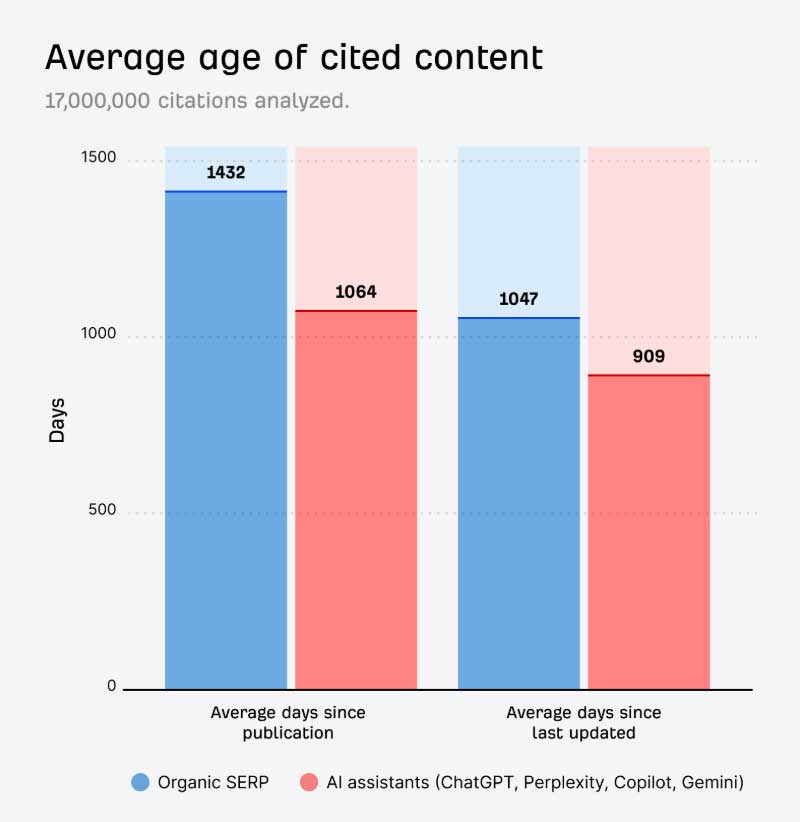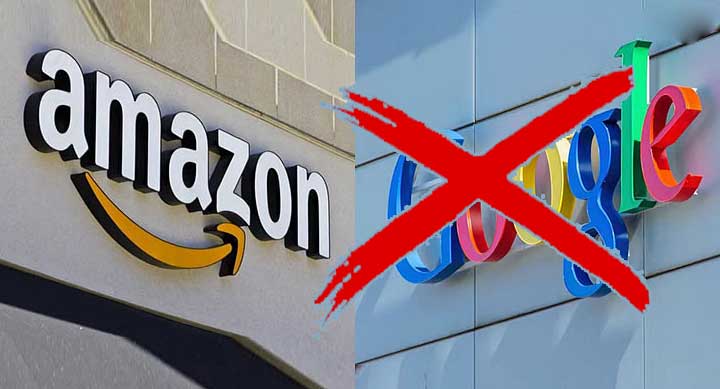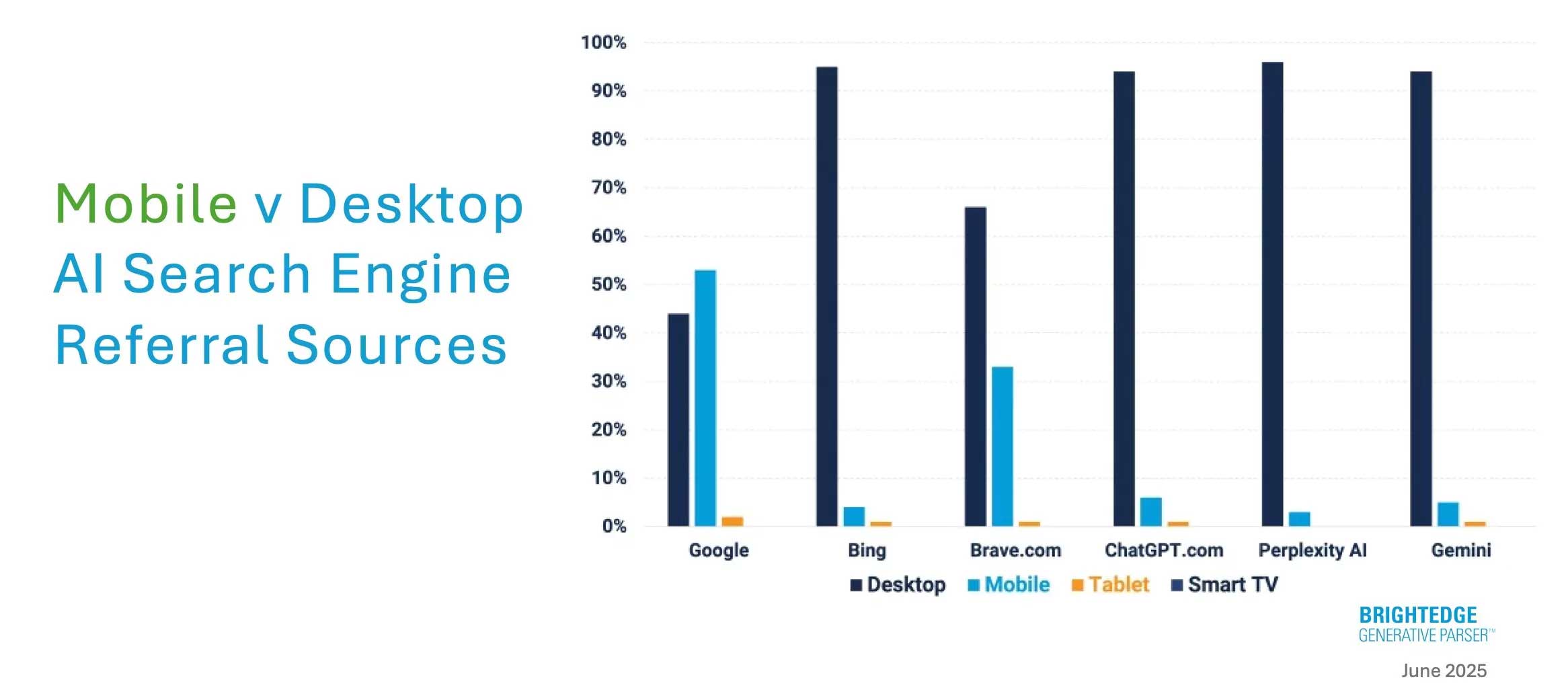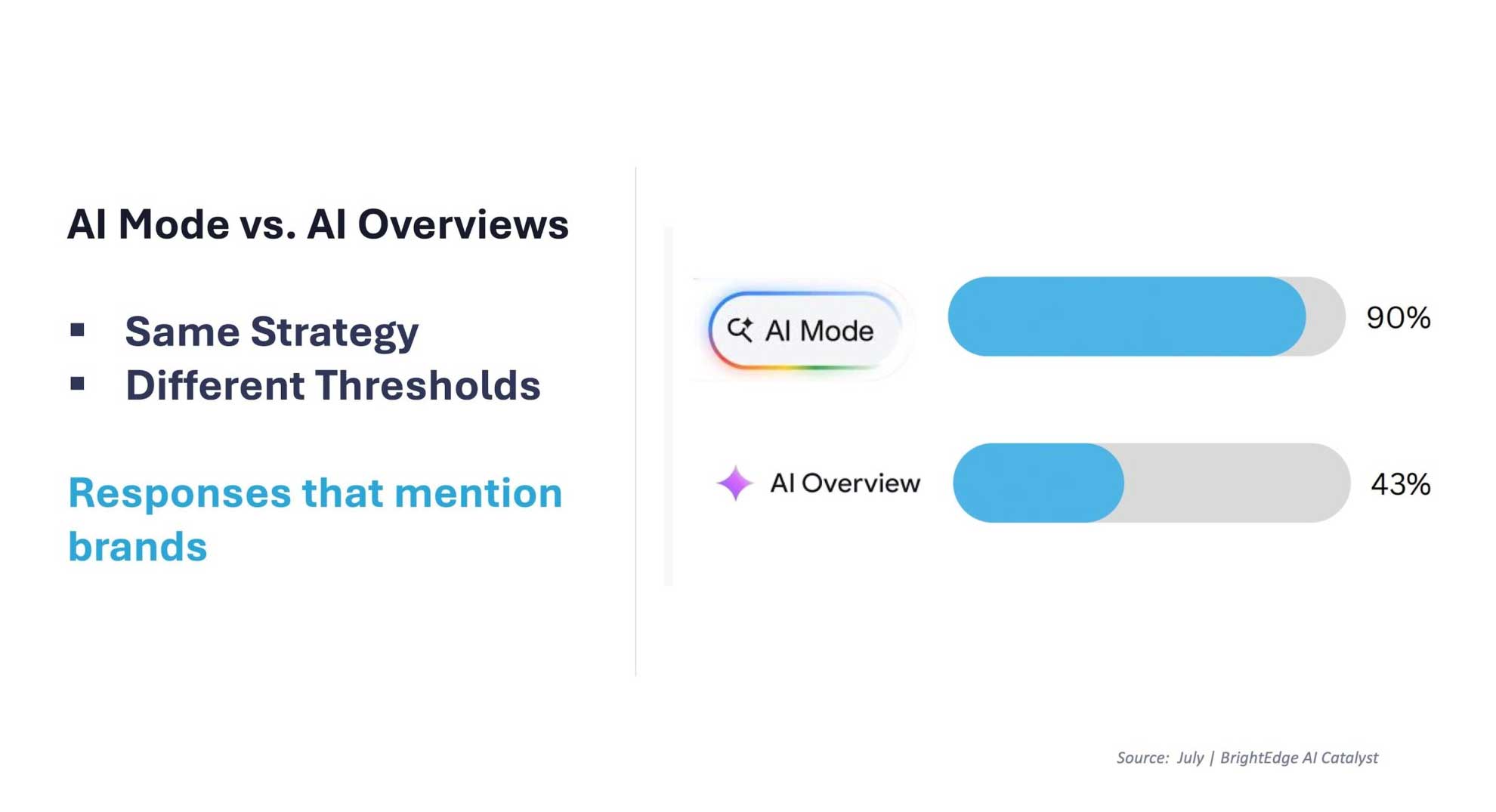This month was huge for marketing, with big SEO, AI, and ad changes. In the top stories of the month, you’ll learn about the completion of the last core update, stats on the behavior of AI assistants, and what it may mean that Amazon has stopped spending on Google ads.
After that, you’ll learn why AI search traffic is ignoring mobile strategies and see some of the results of some of my own fun experiments with AI SEO. You’ll also discover why brands dominate AI mode but seem to struggle in AI Overviews.
At the end, you’ll learn why Google CTRs are crashing and how to avoid penalties with programmatic SEO. Let’s jump in!
Google June 2025 Core Update Completed – Did It Destroy Your Site?
https://www.youtube.com/watch?v=yNh8_Yl6cPY
Barry Schwartz brings you the news that the most recent core update (which ran from July 2nd to July 17th) is now over.
As he notes, it was one of the biggest core updates in a long while. In this video, he lays out what he saw from the update and speculates on whether another one is likely this year.
So, what are site owners saying? Barry says many of them are reporting some of the most significant boosts they’ve seen in a while. He takes you through some of the posts made by site owners, including some who reported the return of the results to the front page.
Several site owners reported seeing an upward trend for sites initially hit by the Sept 2023 through August 2024 Update. These pages were finally starting to recover with the latest one. Several site owners reported complete recoveries after being hit.
While recovery is the story for many sites, Barry is skeptical that most sites can even come back after all of the changes SERPs have undergone. AI Overviews and other news SERP features have captured a lot of traffic that isn’t going back to organic results.
Barry doesn’t believe it’s likely that there will be another core update this year. He notes that the pace of updates seems to have slowed as Google focuses more on letting the results cook for a bit before making big changes.
The next story may have some good information for you if you’re looking to compete under these new conditions. It contains some hard data on the results that AI assistants prefer.
New Study: AI Assistants Prefer to Cite “Fresher” Content
https://ahrefs.com/blog/do-ai-assistants-prefer-to-cite-fresh-content/
Ryan Law and Xibeijia Guan bring you this deep look into what kind of content AI assistants prefer to deliver. They analyzed over 17 million citations that were recorded across seven different AI platforms.
The team was looking for certain information, including:
The average number of days since the cited articles were published (using the date the crawler first saw the articles), and
The average number of days since the cited articles were last updated (using the last published date from the Ahrefs Content Explorer database)

The results were conclusive. The research showed that AI assistants prefer citing fresher content. The team found that the average age of URLs cited by AI assistants is 1064 days, compared to 1432 days for URLs in organic SERPs.
Of the tested AI assistants, ChatGPT was the most likely to cite newer pages, and both Perplexity and ChatGPT preferred to order their references from newest to oldest (giving the newer links a preferred place).
The researchers noted that Google SERPs and AI Overviews are the most likely to prefer older content. However, on average, older content is only 16 days older.
Check out the complete article for a much deeper look. It includes an analysis of all the major assistants and their behavior. At the end, you’ll also find some helpful advice and caveats. Next, Amazon is making considerable changes to its ad spending.
Amazon Stops Spending on Google Shopping Ads – Report
https://seekingalpha.com/news/4474402-amazon-stops-spending-on-google-shopping-ads—report
Ahmed Farhath brings you this report from multiple research analytics firms that track Google’s ad “Auction Insights” tool. This tool provides data on the top 10 advertisers and their share of impressions.
Amazon typically appears on this list of the top advertisers, but it stopped appearing in late July. Advertising analysts are taking this as a sign that the company is no longer bidding to appear for Google Shopping inventory.

Several ad specialists were quoted, confirming the work of the analytics firms.
This is not the first time that Amazon has dropped out of these ads. As the author notes, they last did so in the early days of the pandemic in 2020. This time, Amazon is not announcing any reason for cancelling the ad spend.
This may create an opening for some new opportunities for you if you advertise in related shopping niches. Next, you’ll learn why mobile strategy may not be the best targeting AI search traffic.
The AI Desktop/Mobile Divide: 90% Of AI Search Traffic Ignores Mobile Strategy
Lemuel Park brings you this look at why marketers need to rethink device strategy. He presents some crucial stats from BrightEdge on how AI users are changing the focus for strategies that rely on AI traffic.
Mobile-first strategies have been popular for several years, but the rise of AI may be making mobile a lower priority. The surprising reason is that over 90% of AI-powered search referrals originate from desktop devices.
As he shows you, ChatGPT leads the desktop concentration, with 94% of referral traffic coming from desktop devices, leaving just 6% for mobile users. It’s not just ChatGPT, though. Perplexity, Bing, and Gemini also have desktop traffic that exceeds 90%.

Lemuel has several theories for why this may be happening. First, he points out that AIs work differently when delivering results for desktop and mobile users.
For example, LLMs like ChatGPT direct desktop users to other sites when a link is clicked. However, ChatGPT keeps users in the app when the same link is clicked on mobile devices, along with previews and other features.
He recommends building device-specific AI strategies to serve desktop and mobile users more effectively. He also predicts that mobile will soon be a far more important source of AI traffic.
Next, I tried several of the oddest AI-SEO techniques I could find. Find out whether any of them are worth mixing into your own strategies.
I Tried 3 Weird AI-SEO Techniques. Trash or Smash?
https://www.youtube.com/watch?v=EItVZ5W5FUc
I bring you this look at some of my most recent AI-SEO tests and how they worked. The written guide is also available here.
For this set of tests, I focused on some of the weirdest techniques I’d heard about, but the results were staggering. The tests ended up being worth a 1400%+ increase in AI traffic and 150+ newly-ranking AI Overview keywords. Even organic search traffic doubled!
I cover how these methods can be used to get AI to stop ignoring your content, how to get AI to cite you, and what format makes ChatGPT love your content.
First, I cover log analysis. This highly tedious task has recently been simplified greatly with AI assistants. I fully explain these log files and what they can tell you, including which pages AI loves, which content is more important, and which pages probably need to be fixed.
I’ve already used this technique to massively increase traffic to one of my clients’ pages. The video contains the prompts I used to search the log files and generate the insights I needed.
Next, I experimented with upgrading the schema on lagging pages. AI often needs help to understand the intent of content, and it won’t serve content to users that it can’t understand.
In addition to some examples of schema I provide, I also recommend using:
Descriptive alt text
Clear file names
Use HTML tables instead of images of them
Add transcripts to video content
Adding these to my test content more than tripled the referrals I received from AI sources. Check out my full video to go deeper into the changes I made and the kind of results that were possible. Next up, there’s more AI research, and some big implications for brands.
Brands dominate Google AI Mode, struggle in AI Overviews: Study
https://searchengineland.com/google-ai-mode-overviews-brands-study-459754
Danny Goodwin brings you this look at how brands perform in Google’s two major AI search modes: AI Overviews and full AI Mode search. First, he presents the results of the test.
AI Mode: Brands show up in 90% of responses, surfacing 3.8x more unique brands.
AI Overviews: Brands are mentioned 43% of the time in responses, and there is 30x higher week-to-week volatility.
Citations: AI Mode leans on 5 to 7 source cards; AI Overviews have 20+ inline citations per response.

Danny argues that this matters a lot because search is no longer just about ratings but presence. AI Mode gives brands a great platform, but AI Overviews appear far trickier for brands to penetrate.
This may be due to a difference in how these modes operate. Danny points out that AI mode is meant to be used as a broad, stable discovery engine. However, AI Overviews are more meant to be quick, selective calculators.
Check out the complete story to learn more about what these differences may mean for your brand strategy. Next, Google click-through rates (CTRs) are dropping.
Google CTRs Are Crashing: Position #1 CTR Down 32% Post AI Overview Rollout
https://growthsrc.com/google-organic-ctr-study/
Swapnil Pate brings you this study covering the long crash of CTR rates.
The research involved evaluating 30+ websites across e-commerce, SaaS, B2B, and EdTech industries to find out how Google organic CTRs have changed from 2024 to 2025. The team looked at 200,000+ keywords scattered across product pages and informational content.
They noticed big changes in the number of keywords that appeared. Of the 200,000+ keywords tracked across multiple industries, only 10,000 had AI Overviews showing for them in August 2024, whereas 172,855 keywords triggered AI Overviews by May 2025.

There were a number of shocking results. First, they found that organic CTRs for results in position #1 dropped from 28% to 19% while those of position #2 dropped from 20.83% to 12.60% from 2024 to 2025.
This may come down to changes in how ranking positions are reported to GSC, but the researchers also suggested it could be because AIO is changing how searchers interact with results. For example, users may be driven to lower results by dissatisfaction with AIOs.
Check out the complete study to learn more about these changes and what they may mean for your future strategies. In the last piece of the month, you’ll learn about doorway pages, programmatic SEO, and how to avoid penalties.
Doorway Pages vs. Programmatic SEO: How to Avoid a Google Penalty
https://www.youtube.com/watch?v=gZxw7Cmr0LM
Edward Sturm brings you this look into the differences between doorway pages and programmatic SEO. He explains what Google does and does not tolerate with these strategies, and what’s the best way to keep your sites from getting hit.
First, he defines Doorway Page Abuse, which is covered in Google’s spam policies. Google says this abuse occurs when sites or pages are “created to rank for specific, similar search queries. They lead users to intermediate pages that are less useful than the final destination.”
Examples of doorway abuse from the policy include:
Having multiple websites with slight variations to the URL and home page to maximize their reach for any specific query
Having multiple domain names or pages targeted at specific regions or cities that funnel users to one page
Generating pages to funnel visitors into the actual usable or relevant portion of a site
As he points out, Google is happy to enforce this policy. He provides examples of real businesses devastated by Core Updates, including one that lost more than half its site traffic. Recovery only started when the pages were consolidated with unique content.
It may be hard to separate these pages from programmatic SEO, which can be a legitimate practice when done correctly. He provides an example of a calculator site that successfully generates programmatic pages and is rewarded by Google.
According to Edward, what separates these types of pages is the lack of variables and how specifically they meet searcher intent. Programmatic pages can deliver users to exactly what they want (such as the address of a specific service location), whereas doorway pages generally don’t serve anyone and are made to manipulate search engines.
Check out the complete video guide for tons of extra tips and advice, and come back next month for another roundup of the biggest news in marketing.



